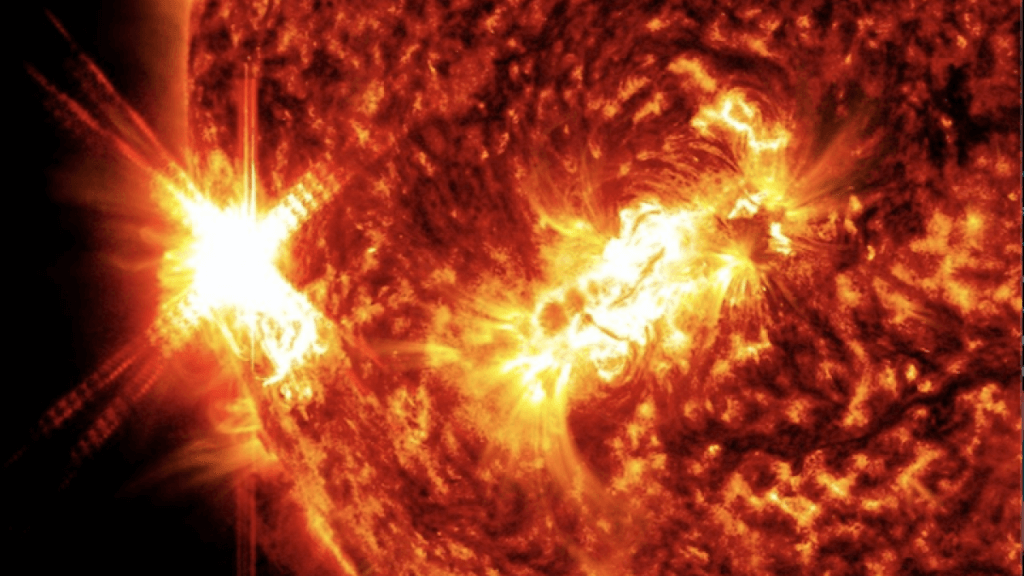
Scientists find proof of unprecedented sun explosion hitting Earth (Image Credit: Mashable)
Fortunately for us, Earth’s atmosphere and magnetic field protect our bodies from such solar radiation, but our technology — namely electrical grids and communication networks — can be severely or catastrophically damaged by solar outbursts.
In a salient warning for the techno-future, scientists have found evidence of the “biggest ever identified,” solar storm, an event that occurred 14,300 years ago, back when saber-toothed cats still roamed present-day Los Angeles. This scale of storm is known as a “Miyake Event,” wherein the sun blasts out immense amounts of solar particles and radiation into space towards Earth’s atmosphere. Ultimately, this solar blast triggers a big spike in a type of element, called radiocarbon, which is stored in Earth’s tree rings.
Taken together with similar evidence preserved in deep Greenland ice cores, researchers show compelling evidence of a colossal solar blast. The research was published in the science journal The Royal Society’s Philosophical Transactions A: Mathematical, Physical and Engineering Sciences.
“Extreme solar storms could have huge impacts on Earth. Such super storms could permanently damage the transformers in our electricity grids, resulting in huge and widespread blackouts lasting months,” Tim Heaton, a professor of Applied Statistics in the School of Mathematics at the University of Leeds who worked on the research, said in a statement.
For example, although not the same type of solar storm, an eruption of hot gas (called a coronal mass ejection, or CME) from the sun impacted Earth in 1989. The results were extreme, knocking out power to millions in Québec, Canada. The CME hit Earth’s magnetic field on March 12 of that year, and then, wrote NASA astronomer Sten Odenwald, “Just after 2:44 a.m. on March 13, the currents found a weakness in the electrical power grid of Québec. In less than two minutes, the entire Québec power grid lost power. During the 12-hour blackout that followed, millions of people suddenly found themselves in dark office buildings and underground pedestrian tunnels, and in stalled elevators.”

Credit: NASA / SDO
The scale and impact of a potent Miyake Event, like the one from 14,300 years ago, would be even greater.
So far, researchers have identified nine Miyake Events from evidence preserved in tree rings and ice cores, including events in 993 AD and 774 AD. “This newly-identified 14,300-year-old storm is, however, the largest that has ever been found – roughly twice the size of these two,” the University of Leeds noted in a release about the research.
Want more science and tech news delivered straight to your inbox? Sign up for Mashable’s Light Speed newsletter today.
The most intense solar storm ever directly observed impacting Earth occurred in 1859, and is called the Carrington Event. A volley of potent CME’s hit Earth, causing “global telegraph lines to spark, setting fire to some telegraph offices and thus disabling the ‘Victorian Internet,'” NASA wrote. Yet a Miyake-type event would be much, much stronger and more potentially damaging, at an “order-of-magnitude greater in size,” the researchers said. That means about ten times more powerful.
The good news is that NASA and other space agencies are closely investigating the sun and its behavior. In the coming years, observations from NASA’s Parker Solar Probe may help researchers better forecast where a potent ejection from the sun may hit Earth, allowing a country or region to better prepare (for example, by temporarily shutting down the electric grid).
Topics
NASA





